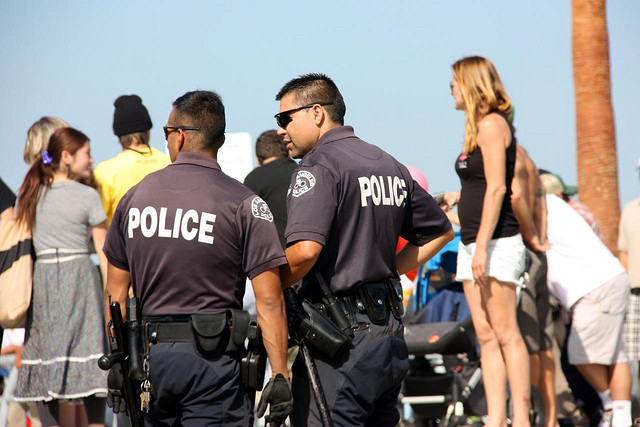![]()
Civil unrest in places like Ferguson, Missouri and Baltimore has local government leaders across the country concerned about police-community relations in their own cities and towns. While it’s true that larger cities with greater diversity – whether economic, ethnic, racial or religious – are more at risk, government leaders in cities of all sizes can assess whether relations between their communities and the police reflect the values of the cities themselves. If they don’t, it may be time to be more sensitive to those relationships, before problems or tensions arise.
I’m reminded of a city that Management Partners worked with several years ago to assess whether their police department was functioning the way leaders wanted it to. It’s an affluent, well-run community, not the sort of place you’d ever expect to see on the evening news. The city manager called because a few council members were concerned that police officers were coming across as “cowboys.”
At first we discussed policies and procedures, but as we talked more, it became obvious that the concerns went beyond a few council members. In interviews, leaders said the tone of the department wasn’t what they wanted for their city. They described it in physical terms – officers in mirrored sunglasses and shiny boots, projecting a militaristic image, when they wanted the police to be seen as friendly and caring.
It was clear the city’s leaders wanted a different tone in their police department, and they needed a new leadership approach in the department to change its image. Because they spent time thinking and talking about their vision, city leaders were able to successfully steer its police-community relations in a different direction, one that reflected the kind of city they wanted to have.
When cities are sensitive to these kinds of issues, when they have proactive leadership that’s willing to regularly assess where the city stands and where they want it to head, they can increase their chances of avoiding messy problems. Because when a situation blows up – whether in violence or in widespread unhappiness and complaints – it’s often too late for an easy fix.
Jerry Newfarmer is part of the GovLoop Featured Blogger program, where we feature blog posts by government voices from all across the country (and world!). To see more Featured Blogger posts, click here.




A former student of mine, some 25 years back, was a police officer in the small (pop 46k) city I was teaching in. In class, we were discussing media influences on thinking. He said that he wished the show Adam-12 would come back. For those who might remember, it was a half-hour weekly police “drama”, focussing on a pair of patrol officers – one younger, one older – that involved a lot more of what most officers busy themselves with: paperwork, responding to small incidents, theft or vandalism complaints, paperwork, etc. There were no chalk outlines on the sidewalk, and rarely anyone holding out a sidearm with both hands yelling “Police! Freeze!”. Indeed, there was very little of the extreme violence, if any violence at all, on the show that we see in plenty these days.
This particular officer’s yearning stemmed from the difficulties he was experiencing interacting with youth. Remember that this was pre-Grand Theft Auto, but there was still an ever-increasing association between police and a Dirty-Harry-shoot-first-ask-questions-later mentality. He found that their backs were up for even the most benign and friendly of approaches. Their hostility initiated an interaction that could rarely take a positive turn. In a sense, he felt like TV and film images had mis-introduced him to young people, and he was paying the price for it. He wanted his proscial motivation to be his introduction, and it was getting blocked.
I don’t know that we can erase the pervasive effects of media images, but the people who crank it out on TV, film, games, the web, could stand to do a better job representing police as “the people” (to reference Sir Robert Peel), rather than the enemy or overseers thereof. Yes, there are “bad guys” out there, but they do not make up the majority of us or police work, and should not be depicted as such. We need to start off trusting each other.
I think you’re onto something, Mark. But there are also steps that government leaders can take to foster positive relationships between the police and residents. It’s tough to overcome the images people see on TV, but it can be done.